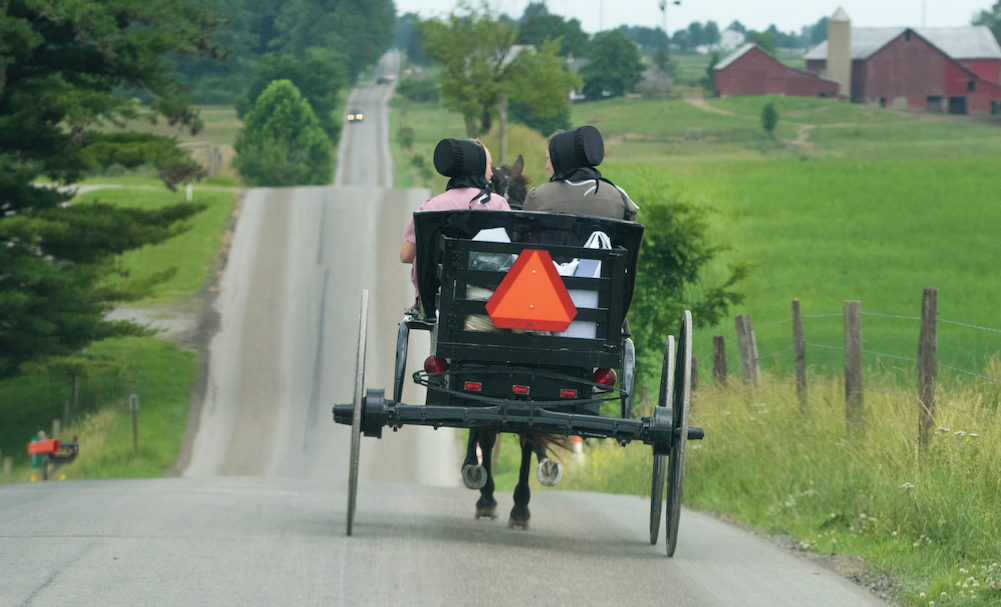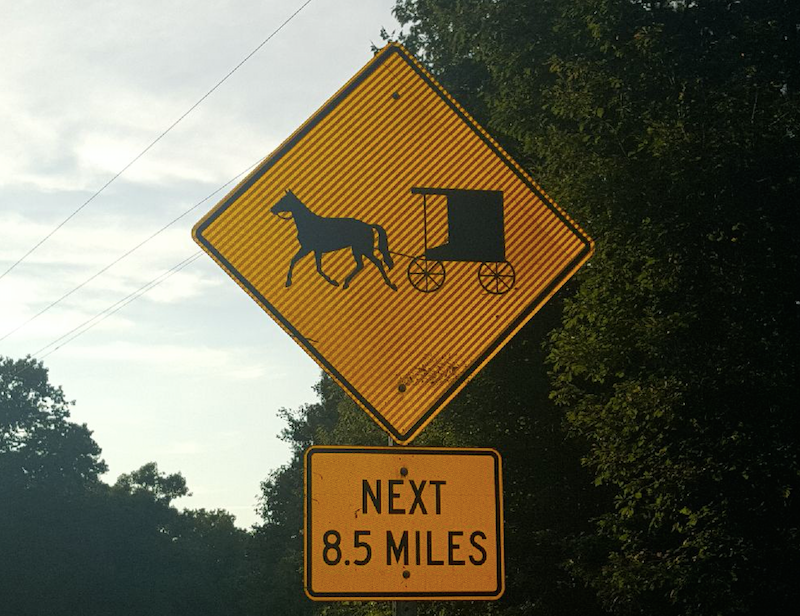Options for improving buggy safety are few
Published 6:00 am Wednesday, September 16, 2020
|
Getting your Trinity Audio player ready...
|
A recent crash in Buckingham County involving an automobile and an Amish buggy has brought a renewed focus to measures that can help safeguard the area’s Amish community on the roadways.
Buckingham County Emergency Management Coordinator Cody Davis noted the county’s Board of Supervisors formed the Buckingham County Amish Community Safety Improvement Committee in 2019 to help address issues facing buggies and their occupants on the roadways.
Davis said the first meeting in which the committee began its work took place Oct. 11, 2019.
The committee is taking an educational approach, he said.
“The committee aims, through literature distribution, posted signage and public events, to educate the community on the laws, regulations and best practices for road safety,” he said. “We will achieve this through our comprehensive ‘Buckingham County Shares the Road’ campaign.
“Our campaign not only addresses Amish safety, but also the safety of farmers/ tractors, bicyclists and walkers/runners on the roadways,” he added. “Along with the educational campaign, VDOT has placed additional ‘Share the Road’ signage throughout the county.”
Unfortunately, the COVID-19 pandemic has put a freeze on much of the committee’s efforts. Davis said all of the measures referenced above were completely halted and have yet to be implemented, with the exception of the additional signage placed by VDOT.
“The committee was scheduled to have an educational booth at Buckingham’s 2020 Mayfest Festival, which was canceled due to COVID-19,” he said. “Additionally, our partnership with Farm Bureau in development of the educational literature materials was delayed due to COVID-19. We hope to have our goals back on track and completed in the near future.”
Marcus Yoder is the executive director of the Amish and Mennonite Heritage Center, located in the heart of Holmes County, Ohio. He shared the perspective of the Amish community on measures put in place in that county while also offering context on how their Amish population compares to the one found in the Farmville area.
“We have about 45,000 Amish in the greater Holmes County community, and you have two districts, which is probably between 150 and 200 people,” he said.
Holmes County Engineer Christopher R. Young said his county has just completed a local road safety plan, which addresses some of the issues posed by cars sharing the roadways with Amish buggies.
In the road safety plan, mitigation strategies include engaging religious leaders by individual church within the Amish community.
The road safety plan outlines strategies to educate both automobile and horse-drawn buggy drivers on safe operation of their respective vehicles; to post warning signs to notify drivers when entering Amish communities; to add a lane on significant hills, allowing motor vehicles to pass slow-moving buggies; and to provide a pull-off on roads that are popular Amish corridors, giving motor vehicles safe space to pass.
Another mitigation measure in the plan included provision of separate buggy/bike trails that would help get buggies and bikes off roadways, and yet another measure involved slow-moving vehicle signs that could be mounted to buggies to alert motor vehicle drivers to the presence of a buggy ahead.
Yoder said more progressive Amish communities will have electric lights and reflective triangles on their buggies, while more conservative communities may have only oil lanterns.
The last mitigation measure listed in the plan referenced widened and treated road shoulders.
Young said the terrain in Holmes County is pretty hilly. A motor vehicle driver can come across a buggy over top of a hill pretty quickly, so the county has put in some road-widening projects that have helped in bad spots.
“We call them ‘buggy lanes,’ but it’s basically a road-widening project,” he said. “So if you go over top of a hill, the buggy will be off to your right-hand side. So, it’s a lane-widening so the buggies can get off the road over top of the bad places — could be a curb, could be a hill, different places.”
He said Holmes County has quite a few buggy lanes.
“There’s one road that I think we have the whole road done,” he said. “It’s seven miles each side that’s reserved for buggies and bicyclists — we have a lot of bicycles — and also walkers.”
Yoder acknowledged that there has been a lot of effort on the part of the county government to widen roads.
“The road I work on has just put two new buggy lanes on each side — that’s been very helpful,” he said. “But in a small community like yours, that’s much more difficult.”
Davis said the measure is something that has been discussed by the safety committee.
“First, we discussed the fact that the Amish community in counties of Ohio and Pennsylvania is much larger than it is here in Buckingham at this time,” he said. “Additionally, we discussed the fact that widening the roads and installing buggy lanes is an extremely challenging and expensive project. That said, the committee does not see that measure being pursued in the near future; however, we are not saying it will never happen, as we realize that the size of the Amish community in Buckingham will likely continue to grow.”
Yoder said the safety initiatives that have gone into effect in Holmes County have been quite important.
“The local Amish community actually, they hold buggy safety classes, driving safety classes for their people, and they’ll often have a representative of law enforcement,” he said. “For instance, they work very closely with the local highway patrol, and they’ll have them in to speak about the importance of this. They try to teach their people about road signs, those kinds of things.”
He admitted that given the massive disparity between an animal-drawn buggy without a car’s safety structure and a couple-thousand-pound vehicle, he is surprised there are not more accidents.
“But a part of it is … the awareness — the county and the state have done really well at signage in preparing people from outside the area to remember that there are other people on the road,” he said.
Yoder said another thing the Amish try to do is encourage their people not to go on “big roads,” as they call them, but to rather stay on smaller roads where either speed is lower or there is a lot less traffic.
Pointing to some of the different factors that result in horrible accidents between automobiles and buggies, Yoder said there are often extenuating circumstances like speed and alcohol.
Thinking of several major accidents from the last couple of years in Holmes County, he said one involved a group of kids in a car, and one of them was driving way too fast, crested a hill and hit a buggy. Another involved a drunk driver plowing into a buggy.
Another accident involved weather conditions, he said. A car traveling at the appropriate speed ran into the back of an open buggy that appeared to come out of the fog at them.
He also said some accidents are caused by a horse balking.







